#erev
Chevy Volt: Truth And Consequences
The autoblogosphere is agog at the revelation that the Volt’s gas engine occasionally powers its wheels. The GM-created “category” of Extended-Range Electric Vehicles (EREV, or E-REV) as uniquely epitomized by the Volt is suddenly revealed [by Motor Trend via GM] to
[have] more in common with a Prius (and other Toyota, Ford, or Nissan Altima hybrids) than anyone suspected.
So, why did the putative “Father of the Volt” (aka “Maximum” Bob Lutz) tell the car’s primary fan site gm-volt.com that the Volt was born because
My desire was to put an electric car concept out there to show the world that unlike the press reports that painted GM as an unfeeling uncaring squanderer of petroleum resources while wonderful Toyota was reinventing the automobile, I just wanted something on the show stand that would show that hey we’re not just thinking of a Prius hybrid here, we’re trying to get gasoline out of the equation entirely.
?
Inside Line: GM Lied, Volt Uses ICE For Propulsion
As GM finally begins to let journalists drive its Chevy Volt, the two-year-long trickle of bad news about the project is turning into a raging torrent. The latest bit of bashing: InsideLine claims that, in direct contradiction to GM’s hype, the Volt is in fact powered by its gasoline engine under certain circumstances.
At the heart of the Volt is the “Voltec” propulsion system and the heart of Voltec is the “4ET50” electric drive unit that contains a pair of electric motors and a “multi-mode transaxle with continuously variable capacity.” This is how GM describes it:
“Unlike a conventional powertrain, there are no step gears within the unit, and no direct mechanical linkage from the engine, through the drive unit to the wheels.”
The 4ET50 is, however, in fact directly bolted to the 1.4-liter, four-cylinder Ecotec internal combustion engine. When the Volt’s lithium-ion battery pack runs down, clutches in the 4ET50 engage and the Ecotec engine is lashed to the generator to produce the electric power necessary to drive the car. However under certain circumstances — speeds near or above 70 mph — in fact the engine will directly drive the front wheels in conjunction with the electric motors.
Video Hints At Volt Performance: Just Over 40 Miles Of EV Range, Under 30 MPG Thereafter
TTAC has a long, proud tradition of tearing into puffy automotive journalism, so it was not without a little trepidation that I wrote in the comments section of Michael Karesh’s excellent review of Zero To Sixty that
Toothless reporters put execs at their ease… which allows them to say naive or revealing things that toothy bloggers can then rip into. In a weird way, the worse the reporter, the better the reporting (as long as the quotes are then duly digested). As time goes on, I find myself more and more at peace with this evolving media food chain… and TTAC’s place in it.
To be clear, this is not an endorsement of toothless coverage per se, it’s just a pragmatic response to the reality that auto industry coverage will continue to be dominated by PR-approved puff. And this video provides yet more proof that non-threatening journalists are actually the most effective at snagging scoops, even if they’re totally unaware of said scoop. Which is where the bloggers come in.
Quote Of The Day: Volt In Need Of A Jolt? Edition
Accelerating up the motorway slip road, the Ampera charges hard and deceptively quickly up to 50mph, but by then the single-speed electric motor’s flat torque curve has begun a nose dive and acceleration at high speeds is poor.
The 0-62mph time of 9 seconds and top speed of 100mph are an indication of this – most family hatchbacks with that sort of sprint capability will have a top speed of nearer 130mph
The Telegraph‘s Andrew English lays into the Chevy Volt/Opel Ampera’s high-speed acceleration, in an early test drive on European roads. Apparently an Opel engineer was embarassed enough by the performance to tell English that
We are considering driving the wheels directly from the petrol engine
Huh?
To Stay Competitive In The EV Transition, Suppliers Focus On Gas Engines
The simplification of the automobile that’s set to take place with the transition to electric drivetrains is a troubling trend for the industry. As Bertel Schmitt has already explored, switching to electric drive could see component counts cut by as much as 90 percent, meaning the suppliers who build most of the components in modern cars are staring down a steep drop in their business. As Automotive News [sub] reports, even electric motors, which were once thought of as a growth area for suppliers looking to get in on the EV shift, are being largely built by OEMs, freezing suppliers out of potential growth. Toyota, Nissan and GM supply their own electric motors, leaving suppliers like Remy International behind in the dust. So how can suppliers stay competitive as EVs become more popular? Counter-intuitively, the answer may be gas-powered range extenders.
Suzuki Announces Volt-Alike Swift Plug-In
Quote Of The Day: Maximum EVolution Edition
Bob Lutz may have left GM, but TTAC’s not through with the man of Maximum just yet. One quote in particular, from an “exit interview” with gm-volt.com, exemplifies the kind of candor that seems likely to disappear from GM along with Lutz. Possibly for good reasons. Well, good PR reasons, anyway. After all, with Lutz unable to deny that GM will lose money and/or battle sticker shock with its forthcoming Volt EREV, he’s the kind of guy who will tell the unspeakable truth instead of playing coy like a good PR man. To wit:
How do we get the cost down without in any way diminishing the value of the car in the eyes of the customer? By just doing some more elegant engineering than we did the first time around where we inadvertently did some belt and suspenders stuff because we wanted to move fast. Now as we look back at the car we say ‘gee I wish we’d done his different,’ …’ gee I wish we’d done that different’ because this is a very expensive solution and we could have done that for a lot less money.
That faint sound you just heard was Ed Whitacre expelling fillet of rattlesnake out his nose after reading that little nugget. Meanwhile, you’ve heard it from the horse’s mouth: the Mk.1 Volt will be expensive, unprofitable, and unpolished. Or, to use a PR term, “belt and suspenders.”
What's Wrong With This Picture: What We Need More Of Is Science Edition
Former EV-1 driver and “science guy” Bill Nye hams it up while promoting GM’s Volt Extended Range Electric Vehicle. And actually, according to a recent gm-volt.com interview with Bob Lutz, GM now prefers that you refer to the Volt as “an electric vehicle with range extension.” Huh? Sounds like they’re gonna need a science guy to break this one down…
What's Wrong With This Picture: Volt Lumina Edition
Patent drawings of what appears to be a compact/subcompact MPV bearing the Chevy Volt’s grille have surfaced at GMInsidenews, setting off much speculation as to what it all means. And boy is there room to speculate. Initial impressions are of a Chevy Orlando/ Buick Granite with a Volt-alike grille, but upon closer inspection the line drawings appear to show a smaller vehicle. After all, Orlando is supposed to offer a seven passenger option, and it’s hard to imagine sitting aft of those rear doors. And yet the Volt drivetrain was built around GM’s Delta II platform, which underpins both the Orlando and Granite (in concept); why would GM downsize its expensive EREV to the Aveo’s Gamma II platform before building out Delta II variants?
Volt Birth Watch 179: The Mystery Dance Number
Chrysler’s new advertisements may have been replaced by this video as the automotive marketing gaffe of the moment. When asked in a Fastlane webchat why GM had approved this questionable video, Sales and Marketing supremo Susan Docherty managed to come across as even more clueless and incompetent than she would have if she’d been prancing front and center:
I have to be honest I haven’t yet seen the Chevrolet Volt song and dance but it sounds like I need to spend some time tonight on the web viewing this. Thanks for the heads up. Do you have any suggestions for us?
Yeah, here are some suggestions: first off, it’s not the roaring twenties, Busby Berkeley. Kill the dance numbers. Suggestion number two: if you’re the head of sales and marketing, you should at least be aware of the existence of “promotional” materials like this. Third: if GM doesn’t take the Volt seriously, nobody will. Keep that in mind when approving marketing ideas.
Volt Birth Watch 177: Can't We Spend $100m On Something?
“A Flush GM to Lavish Cash On New Vehicles,” goes the NY Times headline, forshadowing the kind of profligacy that only happens when you have $42.6 billion of taxpayer money burning a hole in the corporate pockets. From the next generation of truck and SUV platforms to the Cadillac Alpha (known in-house as “BMW Fighter”), that money is going towards products…. at least it is when it’s not going to faltering overseas operations. And in most cases that’s a good thing. For example, Mark Reuss explains “ with the BMW fighter, the steering in that vehicle is going to be absolutely critical. In the past we would have gone to the lowest cost source, but not anymore.” Well, good on ya, mate. When it comes to the Volt though, the money doesn’t seem like it’s being quite as well spent.
Volt Birth Watch 175: California Dreaming
We had been hearing for some time now that GM planned to roll out its Volt EV in limited numbers and select markets, and it comes as no surprise to hear that the first such select market will be California. The Golden State is a hotbed of support for electric vehicles and, not coincidentally, one of the more affluent car markets in the world. A number of firms, from Coda to Honda have selected California as a test-bed for their high-efficiency but not-yet-ready-for-prime-time products. In California, GM is partnering with three public utility companies, and will spend some $30m of DOE-administered stimulus money to slow-roll the Volt into reality. According to GM’s release:
As part of the research and demonstration program, Chevrolet will deliver more than 100 Volts to program participants to use in their fleets for two years. Chevrolet will also utilize OnStar telematics technology to collect vehicle performance data and driver feedback that will be reported to the DOE and used to improve customers’ experiences with the new technology.
Volt Birth Watch 173: Generator Mode Revealed
The Chevrolet Volt can very nearly be boiled down to a single a function: range extension. The Volt’s gasoline range-extender is the car’s major technological advantage over other electric vehicles like Nissan’s Leaf, promising consumers freedom from the terror of range anxiety. But how does it actually work? TTAC’s Volt Birth Watch has long asked the question, and GM has assiduously prevented journalists from describing the Volt’s transition from initial EV range to “generator mode.” Until now. The NY Times‘ Lindsay Brooke recently took a pre-production Volt for a spin at the Milford Proving Grounds, and files this report on the generator mode experience:
It takes a few laps of Milford’s twisty, undulating 3.7-mile road course to deplete the remaining eight miles of battery charge. With the dashboard icon signaling my final mile of range, I point the Volt toward a hill and wait for the sound and feel of the generator engine’s four pistons to chime in.
But I completely miss it; the engine’s initial engagement is inaudible and seamless. I’m impressed. G.M. had not previously made test drives of the Volt in its extended-range mode available to reporters, but I can see that in this development car, at least, the engineers got it right.
Or did they?



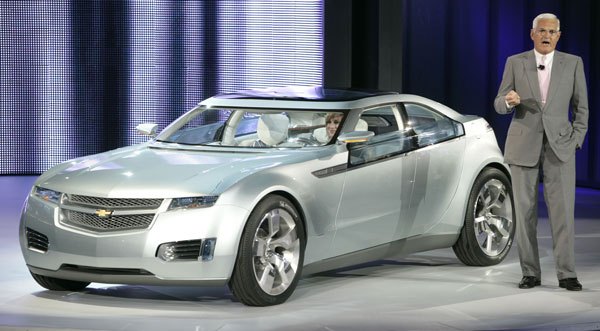
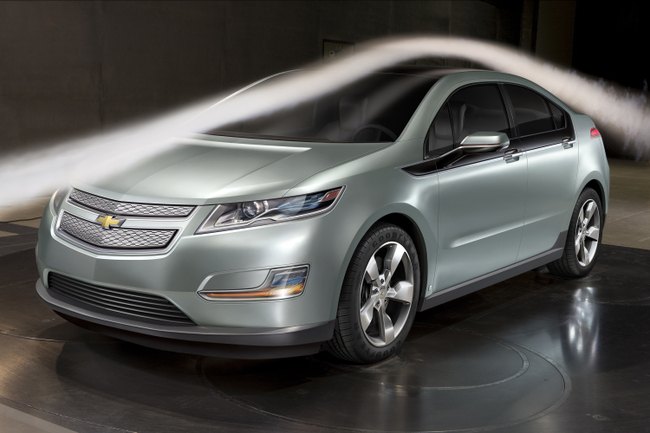


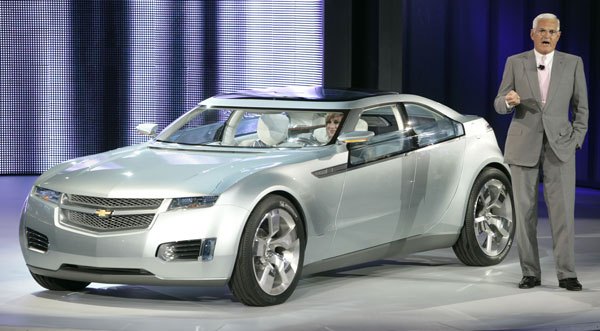




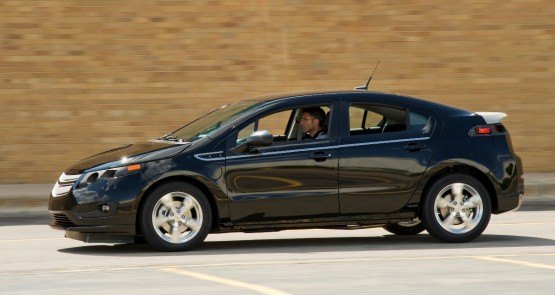
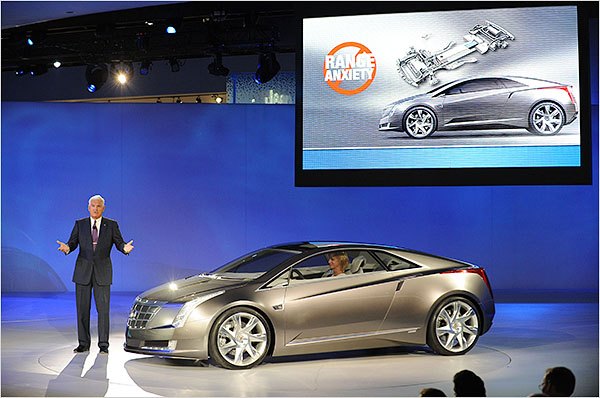












Recent Comments